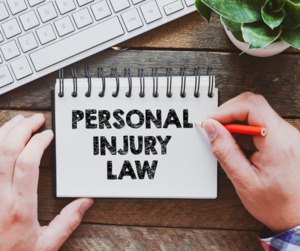Expert Advice from Top Texas Personal Injury Attorneys
 In the complex world of personal injury law, securing knowledgeable legal guidance can be the key to navigating the often convoluted path to justice. This becomes especially significant in Texas, where the nuances of the law can vary greatly from other states, and knowing where to start can be daunting. Understanding the distinctions between personal injury types, the legal framework, and the important timelines involved is crucial for anyone involved in such a case.
In the complex world of personal injury law, securing knowledgeable legal guidance can be the key to navigating the often convoluted path to justice. This becomes especially significant in Texas, where the nuances of the law can vary greatly from other states, and knowing where to start can be daunting. Understanding the distinctions between personal injury types, the legal framework, and the important timelines involved is crucial for anyone involved in such a case.
From the differences between personal and bodily injury to the intricacies of calculating damages, embarking on a personal injury case requires comprehensive knowledge and careful consideration of several factors. Familiarity with Texas-specific legal stipulations, like the statute of limitations and comparative fault doctrine, not only aids in grasping the scope of the law but also safeguards one's rights throughout the process. Furthermore, effective navigation through the claims process and skillful negotiation with insurance companies can significantly affect the outcome of a case.
This article aims to demystify these complexities by presenting insights from top Texas personal injury attorneys, offering clarity on legal distinctions, procedural timelines, and advocating for rights within Texas's legal context. Through expert advice, we will delve into the journey of filing a personal injury claim with professional representation, ensuring that readers emerge informed and empowered.
Key Distinctions in Personal Injury LawPersonal injury law is a crucial area of the legal system in Texas. It deals with situations where someone is injured because of another's actions. This can include physical harm as well as emotional distress. The aim is to provide compensation for the injured party, often involving a personal injury attorney. Such legal proceedings help hold the fault party accountable, ensuring fair compensation for personal injury victims. Understanding personal injury law is essential for anyone involved in an accident or such legal situations.
Personal Injury vs. Bodily InjuryWhen discussing injury cases, the terms "personal injury" and "bodily injury" might sound similar but have distinct meanings. Personal injury refers to broader legal cases, including emotional distress and mental anguish. This can involve various damages, including non-economic damages for pain and suffering. Bodily injury, on the other hand, is more specific to physical injuries sustained in accidents. This type of injury focuses on medical treatment and related costs. In personal injury lawsuits, both types of injuries may play a role, but understanding the difference can clarify the legal process.
Common Types of Personal Injury CasesTexas sees a wide range of personal injury cases each year. These cases can stem from car accidents, slips and falls, and medical malpractice. Car accidents often top the list, where determining the fault party and seeking fair settlement becomes crucial. Slip and fall cases can occur on someone's property due to unsafe conditions. Medical malpractice involves errors by healthcare providers, requiring detailed legal processes. Each type of case has its own set of challenges. A personal injury lawyer can help navigate these complexities, ensuring fair compensation for economic and non-economic damages.
Understanding Economic, Non-Economic, and Punitive DamagesIn personal injury cases, understanding the types of damages is vital. Economic damages cover tangible losses like medical care and property damage. These reflect clear financial losses suffered by the injured party. Non-economic damages compensate for less tangible injuries like emotional distress and physical pain. These are harder to quantify but are critical for full recovery. Lastly, punitive damages aim to punish the wrongdoer, discouraging similar behavior in the future. Each type of damage has a role in helping personal injury victims achieve a fair settlement. Knowing these distinctions is key to navigating personal injury law effectively.
The Legal Framework and TimelinesIn Texas, personal injury law ensures that those harmed by another's negligence receive fair compensation. Understanding the legal framework and timelines is vital for personal injury victims. Meeting state-specific deadlines can affect your personal injury claim. Texas laws are designed to protect the rights of the injured while ensuring fairness between parties involved. Familiarizing yourself with these timelines can help you navigate a personal injury lawsuit successfully. Consulting with a personal injury attorney can provide clarity on the legal process and personal injury lawsuits.
Statute of Limitations in TexasIn Texas, the statute of limitations dictates the time frame for filing a personal injury claim. Typically, you have two years from the date of the injury to file the lawsuit. This timeline applies to various types of damages, including property damage and emotional distress. If you miss this deadline, you may lose your right to pursue legal action. Being aware of the statute of limitations helps ensure that the injured party's rights are protected. For timely action, it's crucial to consult with a personal injury lawyer. They can help you understand how the statute of limitations applies to your case.
Get Help from an Experienced Personal Injury Lawyer in TexasAn experienced personal injury attorney in Harris County, Galveston County, Fort Bend County, Montgomery County, Brazoria County, Houston, Sugar Land, Missouri City, and Stafford, Texas at Thornton Esquire Law Group, PLLC will take over the case from the very beginning and make sure that you receive fair compensation for your injuries. A personal injury lawyer will help you recover medical expenses, lost wages, pain and suffering, and other losses due to the accident. Contact us today at www.thorntonesquirelawgroup.com for a free case evaluation consultation.
 Thornton Esquire Law Group Home
Thornton Esquire Law Group Home














